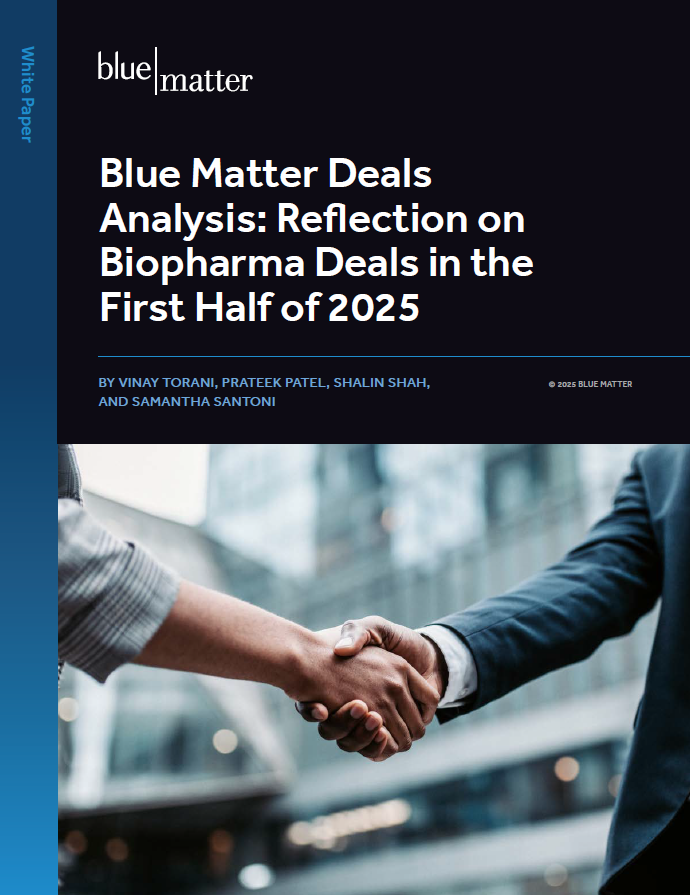
Throughout this series, we’ve been discussing how the roles and expectations for the Medical Affairs function are evolving. Various trends are driving this evolution, raising Medical Affairs’ profile within the biopharma enterprise. Medical Affairs is becoming a central hub for generating insights that can inform strategic planning. It’s also becoming a nexus for generating evidence to support a range of medical and business priorities.
Related to all this, Medical Affairs is increasingly being recognized for the strategic value it can provide. More than ever, it’s getting a “seat at the table” with the R&D and commercial functions when it comes to strategic planning at the product and portfolio levels.
With greater responsibilities come greater expectations. Below, we describe Medical Affairs’ historical role in strategic planning. We also outline how that role is changing and what it means for Medical Affairs professionals and teams.
Medical Affairs’ Traditional Role in Strategic Planning
Traditionally, Medical Affairs (MA) has been viewed as a supporting function with a focus on strategic planning within its own vertical. MA’s work has been about engaging with medical professionals to understand unmet needs, generating evidence to help improve patient outcomes, and providing information and guidance to healthcare providers (HCPs) in that context.
As one might expect, MA’s strategic planning efforts have been historically focused on therapies that are near launch or already on the market. That strategic planning has encompassed things such as medical value proposition development, medical launch planning, linking scientific and clinical results to patient outcomes, as well as MA organizational planning.
The MA function has usually been less involved when it comes to the more holistic “molecule-level” strategic planning for biopharma therapies. Although, it could be argued that truly holistic strategic planning has never been the norm for any function.
Traditionally, each function, including R&D, the commercial organization and MA, would start their strategic planning with their own functional objectives and not in coordination with each other. MA teams are usually formed before commercial teams. However, the commercial teams would be charged with developing product strategy and would often fail to build upon the insights that MA teams had already gained through engagement with HCPs. This creates inefficiencies and redundancies, and can often lead to missed opportunities. However, that situation is changing rapidly as the strategic value of Medical Affairs is becoming more widely recognized.
How Medical Affairs’ Strategic Role is Changing
While MA’s primary mission of improving patient outcomes and providing information and education for medical professionals is still key, the function’s strategic responsibilities are expanding and it’s increasingly being seen as a co-developer of product strategy with the R&D and commercial organizations. MA’s strategic planning is elevating from the functional level to the molecule level.
There are several reasons for this, but they essentially boil down to a critical fact: a large portion of the evidence that MA generates and the relationships that MA develops are highly relevant to product strategy (they always have been, but that reality is now being more appropriately recognized and integrated into commercial strategic planning). Consider the following: Medical Affairs
- Deeply understands clinical practices in their markets
- Is the only function responsible for driving clinical practice change and generates data that can inform future therapeutic practices
- Has excellent, trust-based relationships with stakeholders that are absolutely critical to the success of any therapeutic (e.g., key opinion leaders [KOLs] and HCPs). These stakeholders value MA as a solid educational resource. MA builds these relationships very early on, along with Clinical Development, as opposed to commercial functions, which can only start building those relationships nearer to launch. So, Medical Affairs is favorably positioned to help shape early strategy.
- Is the closest link to the true “Voice of the Customer” and can talk to customers in ways that other functions cannot. This enables MA to collect and provide unique insights into the patient journey, pain points and needs, as well as HCP pain points and needs.
- Generates evidence that is not only relevant to HCPs, but is also important to payers.
Given these realities, it makes sense that MA should become involved in molecule-level strategic planning early in the development cycle, playing an active role in shaping the strategy and the “ecosystem” or market environment surrounding a therapeutic asset. Increasingly, MA is playing a prominent strategic role in areas such as:
- Lifecycle Planning – MA is weighing in on lifecycle strategy development and helping the organization clarify where to invest from a sponsored study perspective vs. through investigator sponsored trials (ISTs).
- Clinical Program Design – MA’s ability to generate insights regarding stakeholders’ (e.g., KOLs, HCPs, patients, and payers) perspectives and what they find relevant can be essential to selecting clinical trial endpoints, determining appropriate comparator arms, identifying target patient populations, establishing inclusion / exclusion criteria, and more.
- Target Product Profile (TPP) Development – MA’s insights can be highly useful in identifying possible points of differentiation, developing a TPP, and generating evidence to support it.
- Patient Journey Mapping – MA’s ability to gain an in-depth understanding of the patient journey, as well as unmet needs and pain points, can be very useful in early planning as well as later in the life cycle. As a new therapy gets closer to launch, MA’s knowledge and input can be helpful for patient finding, development of patient support programs, and development of guidelines amongst others.
- Market and Competitive Insights – As market circumstances change and/or new competitors enter a market, MA’s ability to engage with key stakeholders can make it an invaluable strategic asset.
- Message Development – MA’s insights can help identify compelling clinical and scientific claims as part of message development for HCPs, payers, and other stakeholders. Related to this, MA often has a very strong understanding of competitor datasets and how KOLs feel about them, which enables MA to provide insights into how a product can effectively differentiate.
Implications for the Medical Affairs Organization
Given the shifts that are taking place, it’s becoming clearer that MA teams will need to evolve their capabilities and mindsets. The key implications for MA teams include:
Earlier involvement in planning: As mentioned, MA is becoming strategically involved earlier in the development cycle. MA teams will be helping to shape the development of new therapies and guiding them through their life cycles in ways they typically did not a few years ago.
Broader cross-functional engagement: While MA will remain focused on medical and scientific knowledge, it will be interacting more with the R&D and commercial functions. This means that MA teams will need to expand their mindset (in some cases) to more fully understand the perspectives and objectives of those functions. MA leaders of the future will need a broader, cross-functional understanding of both the medical and business aspects of pharmaceutical development to position them as leaders within the company. Related to this, business acumen will be increasingly important to support informed decision making—and more effective engagement with stakeholders—throughout the product life cycle. MA must be able to navigate the matrix and exert influence without authority to ensure that its voice is appropriately heard and integrated into strategic planning.
Broader perspectives regarding evidence generation: Related to the point above, MA teams will become increasingly adept at analyzing the evidence they generate through a cross-functional lens. It must be able to determine the implications of data from a medical viewpoint, but also from a range of viewpoints, including market access, the competitive environment, and more.
Stronger partnerships: MA leaders will develop stronger partnerships both internally and externally with government agencies, health authorities, and technology companies. They will become more involved in leading cross-functional teams, building consensus, and engaging with those on the “business” side. This may require additional soft skills related to communications and so-called “emotional intelligence” to enable the most productive engagement with non-medical or non-scientific personnel.
New Performance or “Impact” Measures: Traditional performance measures for MA teams typically revolve around activity metrics such as publications or evidence generated. Such metrics are very execution-oriented and often binary (i.e., was this activity completed, yes/no?). In the future, they will need to be more results-oriented. Newer metrics could include “knowledge measures” that focus on gauging clinician knowledge, beliefs, confidence, and attitudes. Likely, MA teams will become more inclined to define up front the impact they are seeking to achieve, then use new performance measures to gauge the level of success. This may be easier said than done, however. It can be very challenging to develop metrics that tie directly to MA activity. Those activities often do not have immediate impacts. For example, evidence generation takes time and its impact on clinical beliefs, attitudes, and practice doesn’t happen overnight. MA teams will need to develop leading indicators that will enable them to course correct based on changing market characteristics or needs.
Coming Next
As we’ve seen, the world is changing for MA when it comes to strategy development. But, the changes don’t stop there. Thanks (in part) to the COVID pandemic but also to a range of other trends, the ways in which biopharma companies engage with HCPs and other stakeholders is evolving rapidly. Reliance on the traditional field force model is waning. New customer-facing roles, new digital technologies, and a range of other developments are beginning to take root. For Medical Affairs, this could spell big changes in the way it communicates and engages with its stakeholders. We’ll explore MA and communications in our next installment.









